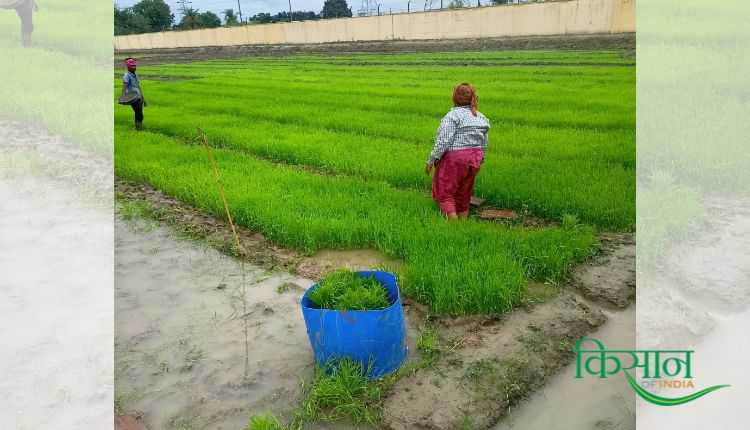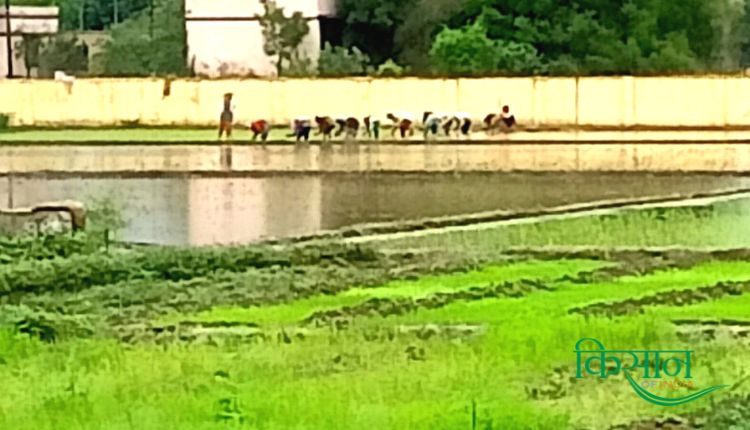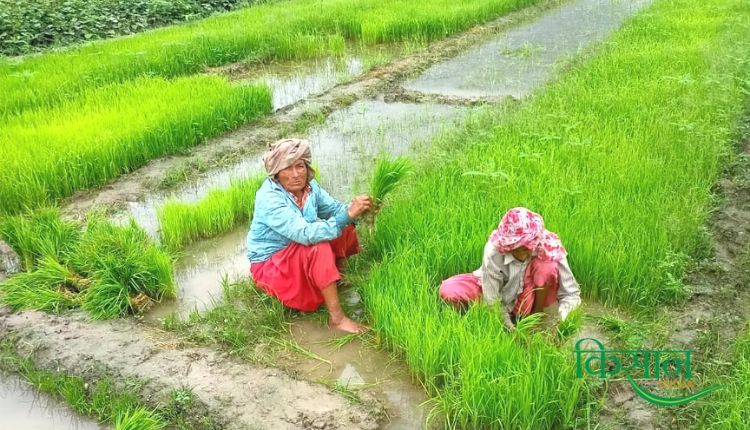Advanced methods for Paddy Cultivation
Advanced methods of transplanting, weed control and irrigation management in paddy cultivation, avoid using chemical fertilizers in paddy. Know from Dr. Rajeev Kumar Singh
Rice is the staple food of about 65 percent of the country’s population. At present, the farmers are doing paddy nursery and transplanting work at a rapid pace. However, it has been observed that paddy crops sometimes wilt or dry up due to lack of management. Due to this, farmers do not get better yield from paddy. Weed control and irrigation management are the main tasks for farmers in paddy planting, by proper management of which the foundation of good yield from paddy crop can be laid. Kisan of India had a special conversation with Dr. Rajeev Kumar Singh, Principal Scientist, Agronomy Division, Indian Agricultural Research Institute, about high management in paddy cultivation.
Keep these important things in mind while transplanting paddy
Principal Scientist Dr. Rajeev Kumar Singh said that the transplanting of mid and late ripening varieties of paddy should be completed by the month of June. Transplanting of early maturing varieties of paddy can be done in the second fortnight of July. Paddy seedlings should be 20 to 25 days old. While taking out the saplings from the nursery, care should be taken that the roots of the plants should not be broken. For this, apply water in the nursery a day before uprooting and be careful while uprooting. Transplant the seedlings in rows. Keep row to row and plant to plant distance of 25×15 cm. Two to three plants should be planted at one place. Plant the seedlings at a depth of 3-4 cm. The number of hills should be kept at 36 per square meter to get abundant production.

Don’t make mistake in weed management in paddy cultivation
Dr. Rajeev Kumar Singh said that the problem of weeds in paddy crop is most serious. Where the paddy crop does not grow properly due to weeds, its yield is also affected. The damage caused by weeds in paddy crop depends on the abundance of weeds, their variety. In such a situation, it becomes very important to control them in time. Weeds usually cause more damage in paddy cultivation.
There are generally three types of weeds found in paddy crop. The first broad leaf weeds, the second narrow leaf weeds and the third Motha weeds. The loss due to weeds in paddy crop has been estimated from 5 to 85 percent, while sometimes this loss can be up to 100 percent.

Weeds are removed from the fields with the help of hands or spade, but in direct sown crops in rows, weeds can also be controlled with the help of conoweeder or padiweeder. Apart from this, 80-100 ml of the chemical drug Bispyribac, which is available in the market under many names, can be used. Weeds can be prevented by mixing this medicine in 500 to 600 litres of water and spraying it per hectare of the field.
Avoid excessive use of chemical fertilizers in paddy
Dr. Rajeev said that the amount of nutrients in the soil, the method and time of fertilization also have an impact on the growth of crops and weeds. Both crop and weed compete for the nutrients of the field. By controlling weeds, it is ensured that all the nutrients are available to the crop. Paddy crop is able to make proper use of nutrients if they are given in the right amount and at the right time. In non-irrigated fertile land where the problem of weeds is high, it is more beneficial to apply the initial dose of nitrogen after the first weeding rather than at the time of sowing.

Use of organic fertilizers in paddy cultivation
According to agricultural scientist Dr. Rajeev, after giving basal dose, the first dose of remaining 50 percent quantity of nitrogen should be given 25-30 days after transplanting paddy. Those farmers who have not used zinc sulphate as basal dose, they can spray 0.5 percent zinc sulphate in the standing paddy crop. Apart from this, you can use biofertilizer blue-green algae or Azolla in paddy crop after 25-30 days of transplanting. 10-15 kg of Azolla and Bluegreen Algae should be used per hectare in the field. Due to this cost is reduced and soil fertility is maintained.
How to manage irrigation?
Paddy crop needs maximum water. It is very important to maintain water in the field at some special stages of the crop, such as tilling till one week after transplanting, tillering, flowering and grain filling. Immediately after the flowering process, these ears start getting grains. At this time, care should be taken in the field that there is sufficient moisture in the field. There should be no cracks in the fields. If there is no moisture in the field, then grains will not form in the ears. Even if they are made later, they will not be of good quality. Therefore, to maintain the moisture, embankment of the paddy field is necessary so that the rain water or the water lying in the field does not come out. Good yield if 3-4 cm of water remains in the field.
Contact us: If farmers want to share information or experiences related to farming with us, then they can do this by calling us on the phone number 9599273766 or by writing an email to [email protected] or by sending your recording. Through Kisan of India, we will convey your message to the people, because we believe that if the farmers are advanced then the country is happy.



